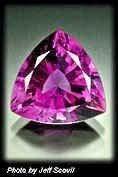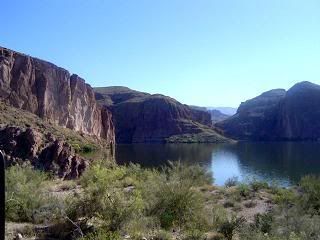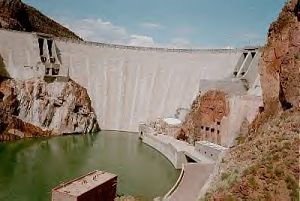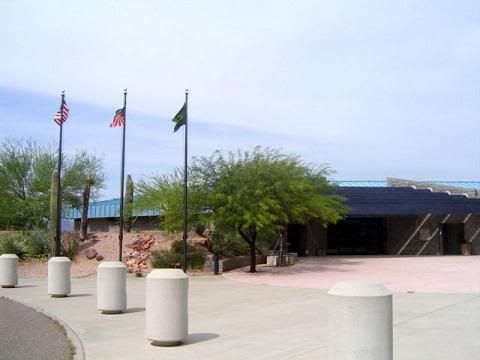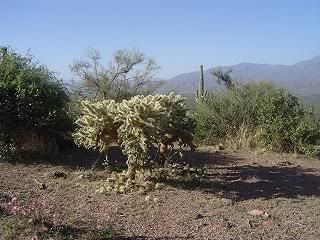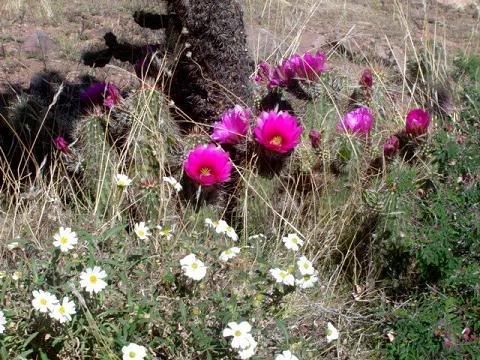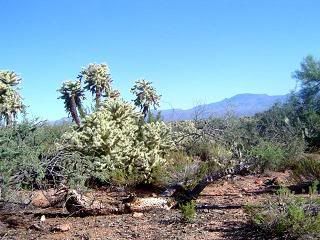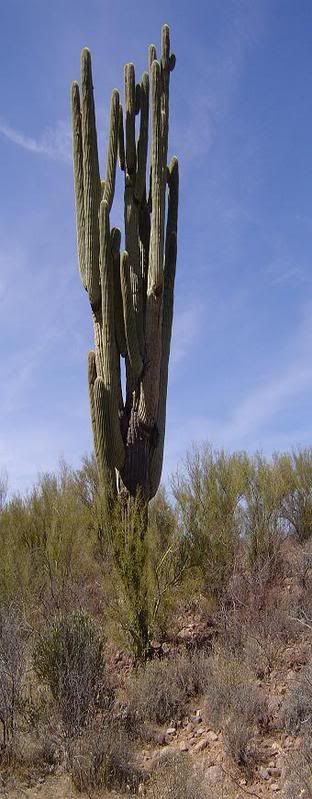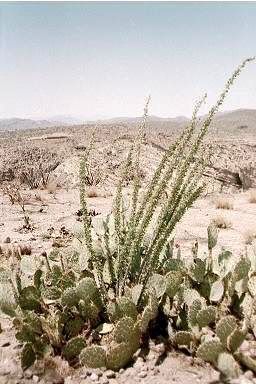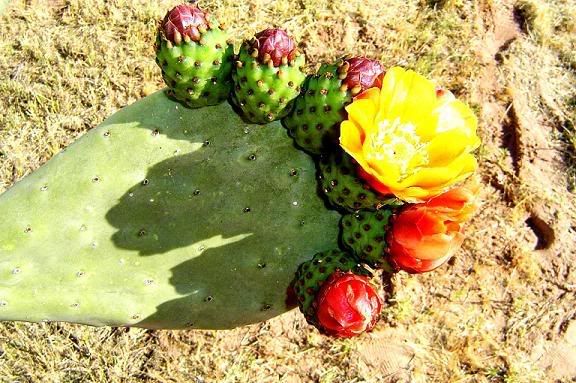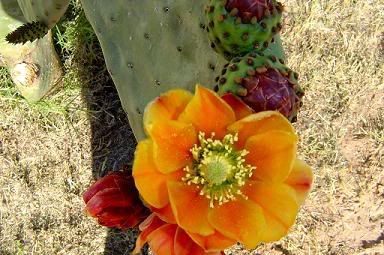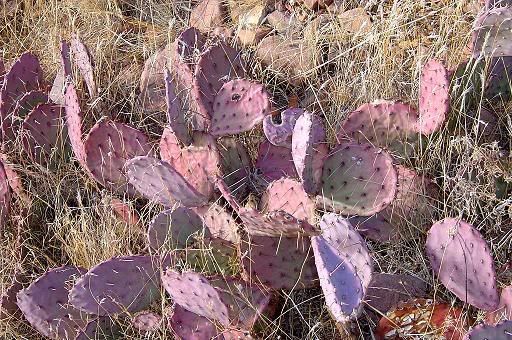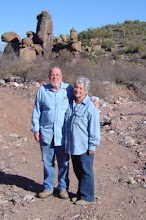
Tuesday, December 26, 2006
What a nice way to spend Christmas Day.

Christmas Eve 2006
The Salado Indians inhabited much of the land throughout Arizona, during 1280s up until somewhere around 1350. They were farmers and gatherers for the most part and lived in cliff dwellings carved and built high up on canyon walls. Their perches enabled them to see if enemies were approaching and also gave them a vantage point to watch for any game that might come their way. The trees and heavy brush hid the dwellings from anyone walking the path below.
We visited one of these ruins on Christmas Eve with our friends Larry & Jean, their son and two granddaughters. A nice way to spend the holiday. We drove in as far as we could then hiked the 2+ miles to the ruins. It was a bit of a scramble up the steep path leading to the ruins, but we were rewarded with a super location to explore. The walls and ceilings built into the cliffside were made of stone and mud mortar, supported by long logs. In some places we could still make out the almost 700 year old fingerprints left in the mortar. Blackened stones overhead indicated the fires the ancients used for heating and cooking. From the interior of one of the rooms, we could see that at one time there were several levels of living space. The particular dwellings we visited are located high above Coon Creek in the Sierra Anchas of Arizona. Below the dwellings, along Coon Creek, the land was flat and easily irrigated by the waters of the creek were where the Salados did their farming.
This must have been the same view the ancient Salado Indians had
Sunday, December 17, 2006
Vestiges
I came across this picture in my files of an old stone house we came across in Lucerne Valley, California. I was inspired by it to write the following prose.
Vestiges
Trekking through the sage and scrub we happen upon walls of stone.
A hearth which once held the warmth of kinship now holds only ashes heated by the relentless sun.
Long gone are the hands that toiled and labored to form this humble dwelling.
Blood and sweat are no longer evident in the mortar that refuses to give up its hold.
Only an empty shell sits in silent testimony to the lives it once sheltered.
Wind whistling through empty rooms is the only sound our conscious mind can hear.
We pause and listen with our hearts,
only then can we perceive the faint sounds of laughter which once must have echoed here.
A broken doll cast aside on the sandy floor,
her button eyes reflect a look of longing for a long-gone playmate.
Shards of glass bespeak a time when a cup was raised in a toast to life.
Ragged remnants of lace flutter at the blankly staring windows,
a contradictory statement to these harsh surroundings.
Rust now blankets an iron bed,
once the place to rest a weary body,
Mutely we hear the sighs of a lover and the joyous tears of childbirth.
Now, as the desert reclaims what is hers,
only vestiges of those who dwelled within these walls remains ....
Soon all will return to the greedy arms of the land which once cradled them.
© LauraA 1999-2006
Tonto Basin Gypsum Mill
12/17/06
Ladder to nowhere
Inside the mill, now open to the elements
Falling apart at the seams
Monday, December 11, 2006
Searching for Azurite


Saturday, November 18, 2006
Bluebird Mine, Success At Last!
Maxie Anderson invested in mining at an early age, probably to help support his passion for ballooning. Nobody seems to know what his intentions were for the Blue Bird, since it was thought that Azurite, the primary mineral at the Blue Bird had run out and there isn't a big market for Fluorite, the secondary mineral found there.
Since he purchased the mine between 1976 and 1980 after it had supposedly played out, I wonder if he knew there was something else worth mining there?
The Anderson-Abruzzi Balloon Museum is located in Albuquerque, New Mexico.
11/17/06
The quarter mile hike back into the Bluebird Canyon was semi strenuous, with lots of boulders to scramble over and cactus spines to avoid, but at the end of the hike we were rewarded with success. There ahead of us were the remains of the Bluebird Mine. Finally, after 6 attempts, we had reached our goal. A large ore chute, a conveyor of some sort with tracks leading from the mine to the conveyor and then to the ore chute. There were assorted remains, fallen wooden buildings, tracks all over the place, an old assayer's office now covered with corrugated metal siding.
The view from the adit was dark and ominous as we peered into the gloomy interior but we decided to go for it. The walls and ceiling were solid rock, the floor was lined by ore cart tracks and very little sound marred the silence except for our muffled footsteps and nervous laughter as we left the light of the mine entrance behind us. Only our flashlight beams lit the way as we went deeper into the mine. When we had gone a very slow, 150 feet into the mine making twists and turns along the way our flashlight beams in unison focused on a dark form on the floor ahead of us. There, as we approached, we could make out the shape of a human figure and upon closer inspection, we could see it was a skeleton, dressed in rotting clothing, wearing boots that were decaying exposing bony toes. Scott, being young and foolishly brave moved aside a bit of clothing and we saw an arrow piercing the skeleton's chest and large silver coins spilled from his pockets. Around his waist were the remains of a holster with a large gun still in place. At that point we turned and headed out of the mine at a much faster pace than the one we used entering it................
And now, the truth.....

We did indeed finally reach the Bluebird Mine, but alas, no skeleton, no skeletal toes, no arrow, no coins and no holstered gun. We were instead rewarded with some really neat ruins. The conveyor with tracks leading up was something we hadn't seen before and while poking around the assayer's office, we found some old tools which had fallen down behind a bench. There was a heavy, handmade chair and of course modern day beer cans and shotgun shells littering the ground from previous explorers to the area. Dammit, I wish people would be more considerate of these places, but that's the topic for another thread. We weren't disappointed at all at not finding any hidden treasure, instead we had the satisfaction of finally reaching our goal. It was worth the wait. Sometime in not too distant future, this site will be gone, scheduled for "reclamation" but at least we've photographed it, explored it and brought home a few things which would have been lost to the bulldozer's blade.

Ore chute
Assayer's office
Thursday, November 2, 2006
Old Dominion Mine, Globe, Arizona
The mine had a rather infamous place in history when in 1917, a miners strike spread throughout Arizona, beginning at the mines around Bisbee.
The owners of the Old Dominion had employed quite a few Mexican workers, but when they too decided to participate in the strike, the mine owner hired cowboys and gunmen to "herd" the Mexican workers to an internment camp along the Mexican border where they were kept under the harshest conditions until they agreed to return to work and not participate in the strike. The strike proved fairly successful however, wages and living conditions improved once public outcry had an impact on the mine owners.
The Old Dominion Mine has been recently "refurbished" and talks are currently underway with the mine owner BHP Billiton and the city of Globe to open the grounds as a public park. As you can see from the photos, it's been pretty much sterilized and only retains a semblance of its original glory days. There was a big discussion whether to keep the massive headframe in place, but so far, it looks like they'll leave it. I hope so, the mine would be little more than a few buildings and grated adits without it.
Old Dominion Mine after being "sterilized"
Sunday, October 22, 2006
Four Peaks
Saturday, October 14, 2006
Bouquet Ranch, a desert oasis
Not much is left of the old ranch today except for a few timbers and some stones, unfortunately, it's been bulldozed. It sits on private property within the National Forest. The one thing that remains is the beautiful, shady oasis, the Bouquet spring. There are about 10 enormous palm trees Charles Bouquet planted at the water's edge with their roots in the water. They're flourishing today. It's hard to imagine such a place exists in the Arizona desert, especially on a 110 degree day like today.
When we were there, it was full of bullfrogs and water birds, taking refuge beneath the palm tree's heavy skirts. What a site!

Thursday, October 5, 2006
The Apache Trail
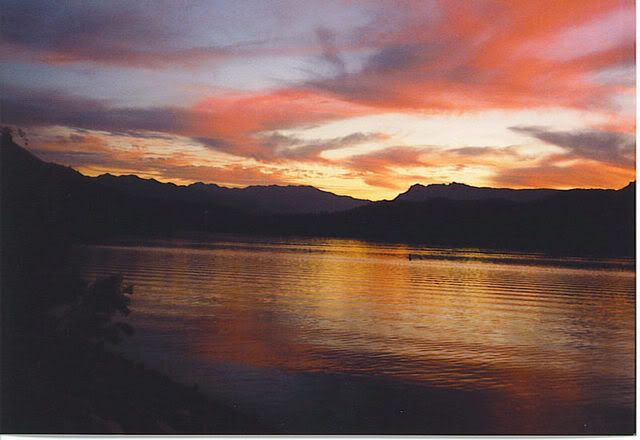 |
|
The Apache Trail
Lore and legend cloak canyon walls with an air of mystery
Sheer cliffs of stark grandeur careen toward peacefulrivers
Silent breezes are accented by cries from soaring hawks
We envy their freedom to view this world from a unique vantage
Boulders balanced upon tenuous perches as though placed there by playful hands
Spires and minarets of sandstone by no accident call to mind holy places
Lakes of unfathomed depth keep secret the hidden vista below
Each mile is given to us as a gift revealed as we venture on
Dizzying heights give way to peaceful meadows, our senses are assailed by what unfolds before us
Layers of time are seen in ageless formations
Cactus basks beneath the broiling sun luxuriating in the nourishing heat
Storm clouds sneak in unnoticed by enthralled travelers
The sky darkens to rich gray hues, a deep growl of thunder echoes followed by unleashed streaks of lightening splitting the boiling clouds
The hawk dives for cover sensing what is to come
Monsoon rains fall fast and hard upon the arid landscape
The sand drinks 'til sated then rejects the leftovers filling once dry washes and gulches as waters stampede to lower points
Rocks with eons old addresses move with the torrential onslaught seeking relocation
As quickly as the storm enters, it vanishes as the clouds are tossed aside by the jealous sun, eager to retake his domain
The hawk shakes and preens droplets from his feathers, then leaps joyously forth to survey the changes
Catching a current, he ascends smoothly, dipping and gliding his dance beneath the sun
Reaching a rise, we pause to survey the panoramic wonder spread before us
Our eyes try to reject the reality of such contradiction
Green, brown, blue and purple assault our senses in a riotous ballet of colors
Moving on, we see scorched ground which bespeaks a bygone day when hellish blazes charred the already arid earth
Tiny shoots of infant cacti pierce the sand refusing to concede defeat
Weary and dusty we come upon man's imposition on the land
Rising from the depth of a canyon, steel and concrete seems alien in these surroundings, daring to ration water to the valleys below.
Exhilaration is felt as we reach trails end, yet the lore and legend beckons our return
Our spirits are lifted, our souls have been nourished
©1999-2007 Laura Aden
Special thanks to the Tonto National Forest Rangers (Roosevelt Lake)
10/5/06
We would be remiss if we didn't take this opportunity to thank the fine people at the Tonto National Forest Ranger Station. In particular, Forest Ranger,Quinton Johnson who has answered numerous questions and told us some wonderful places to seek out. He knows the TNF like the back of his hand and is more than willing to share his knowledge.
We're lucky to live just minutes away from the Roosevelt Lake Visitor Center which is also home base for our local Ranger Station.
Thanks so much!
This is Quinton Johnson, Ranger Extraordinaire!
 | ||
Visitor Center and Ranger Station at Roosevelt Lake
|
Desert beauty
|

